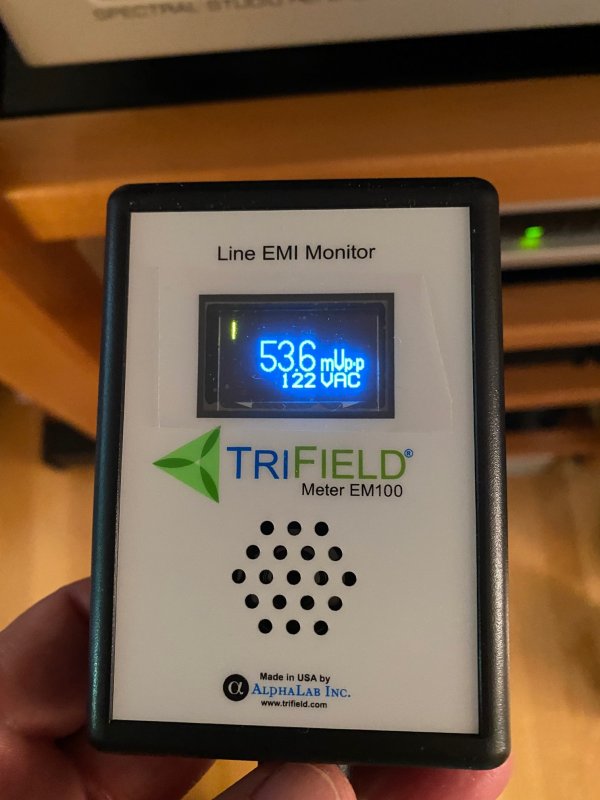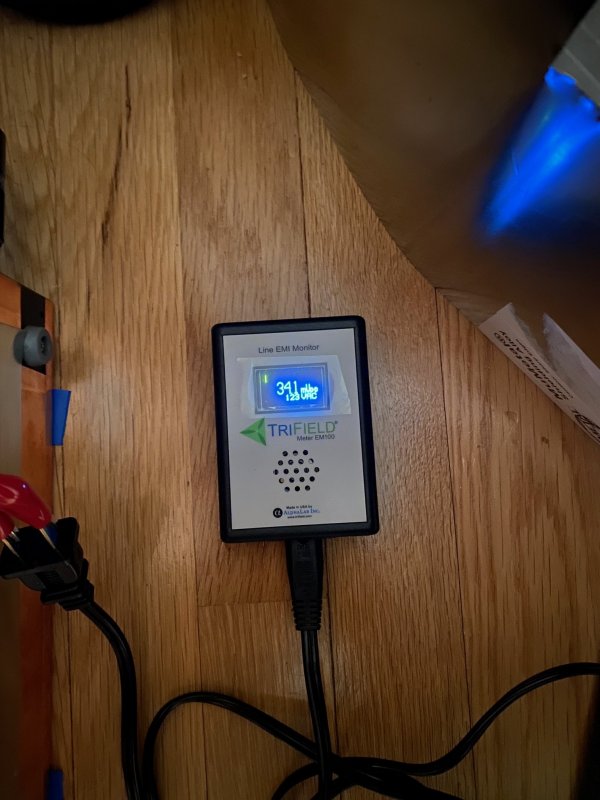First of all, thanks to @VLS for introducing me to to the TriField EM100
https://www.alphalabinc.com/product/plm/
https://www.amazon.com/gp/product/B083PZ7JR3/ref=ppx_yo_dt_b_asin_title_o02_s00?ie=UTF8&psc=1
This tool measures line noise as mV peak-to-peak and the results are interesting, especially when compared to what's coming out of the Shunyata Denali 6000/S v2 outlets and associated power cords:
1) My dimmable 12V lights are feeding significant noise into the line
2) My microwave has extremely small impact
3) The electric oven has no impact
4) The Denali v2 is a super-star
5) The Shunyata Defender has no effect
6) The Shunyata Venom XC cords (non-noise reducing) still reduce noise further a little bit, by virtue of construction
7) The Shunyata Venom NR (noise-reducing) cords further reduce noise quite a bit
8) The Denali's CCI (component-to-component) isolation actually works as advertised: Feeding two DACs with NR cords from the same Denali outlet with a splitter ends up increasing the noise out of either cord as opposed to any other NR cord coming out of the Denali, so the DACs are feeding noise back into the line, picked up by the other
Here are the measurements:
Baseline, NO LIGHTS, nearby outlet:
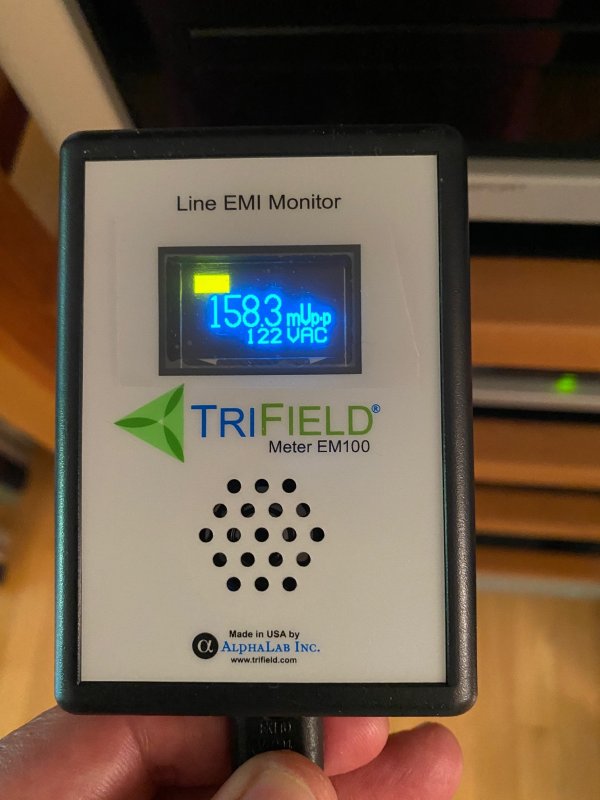
Baseline, FIRST set of 12V dimmable lights ON, nearby outlet:
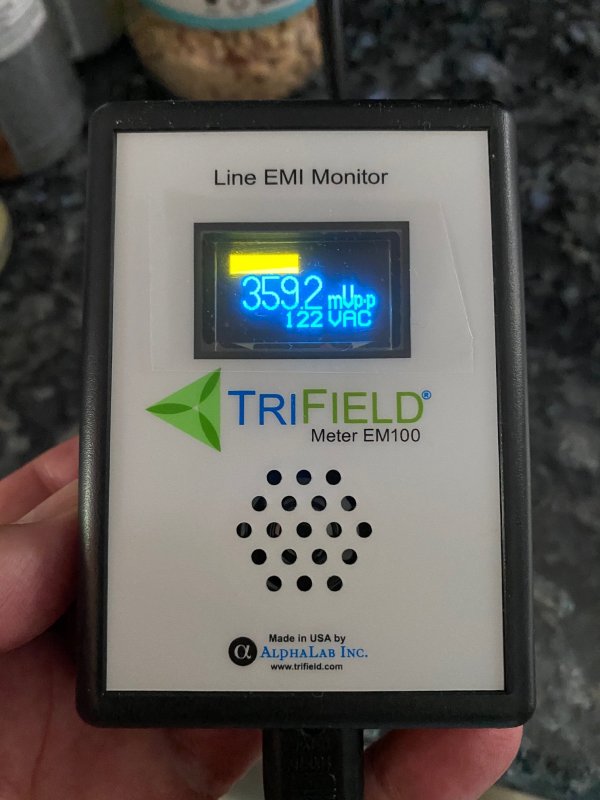
Baseline, SECOND set of 12V dimmable lights ON, nearby outlet:
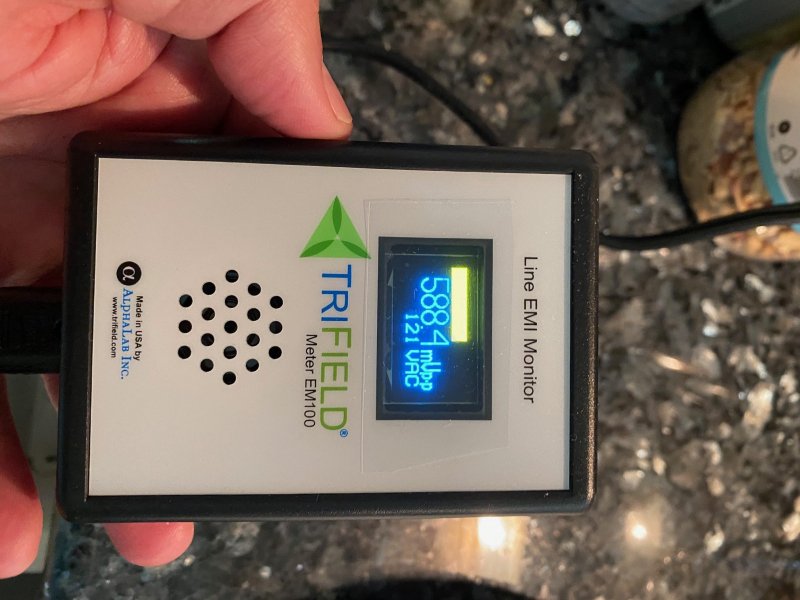
Denali outlet, NO LIGHTS:
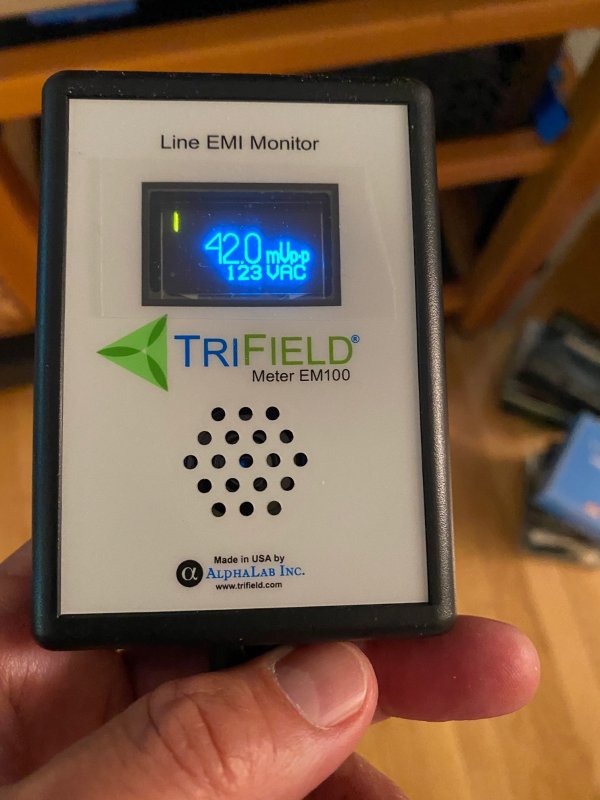
Denali outlet, FIRST set of 12V lights ON:
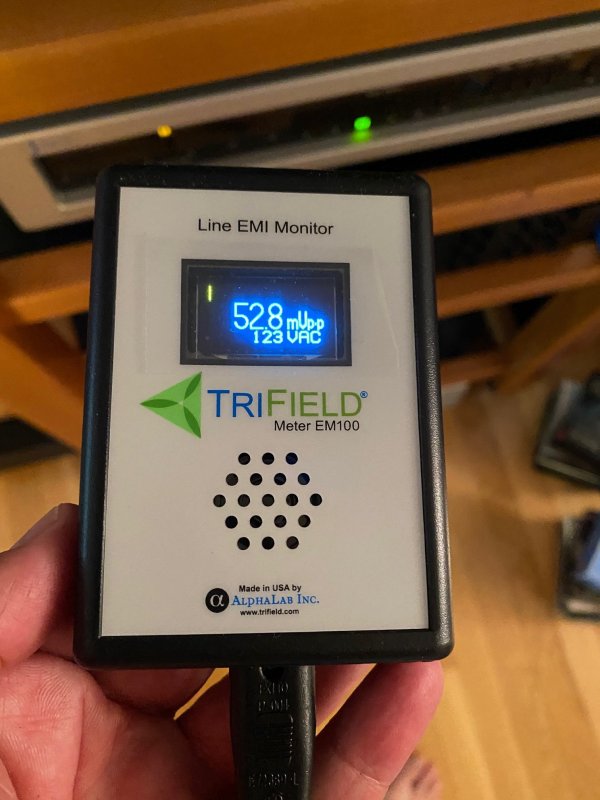
https://www.alphalabinc.com/product/plm/
https://www.amazon.com/gp/product/B083PZ7JR3/ref=ppx_yo_dt_b_asin_title_o02_s00?ie=UTF8&psc=1
This tool measures line noise as mV peak-to-peak and the results are interesting, especially when compared to what's coming out of the Shunyata Denali 6000/S v2 outlets and associated power cords:
1) My dimmable 12V lights are feeding significant noise into the line
2) My microwave has extremely small impact
3) The electric oven has no impact
4) The Denali v2 is a super-star
5) The Shunyata Defender has no effect
6) The Shunyata Venom XC cords (non-noise reducing) still reduce noise further a little bit, by virtue of construction
7) The Shunyata Venom NR (noise-reducing) cords further reduce noise quite a bit
8) The Denali's CCI (component-to-component) isolation actually works as advertised: Feeding two DACs with NR cords from the same Denali outlet with a splitter ends up increasing the noise out of either cord as opposed to any other NR cord coming out of the Denali, so the DACs are feeding noise back into the line, picked up by the other
Here are the measurements:
Baseline, NO LIGHTS, nearby outlet:

Baseline, FIRST set of 12V dimmable lights ON, nearby outlet:

Baseline, SECOND set of 12V dimmable lights ON, nearby outlet:

Denali outlet, NO LIGHTS:

Denali outlet, FIRST set of 12V lights ON:

Last edited:







